The verdict: Less is more in the case of the 2017 Lexus RC 350, which provides a more enjoyable stroll through the countryside when you don’t add the optional F Sport Package and navigation system.
Versus the competition: Besides its standout looks, the RC is tough to distinguish from other luxury coupes.
The 2017 Lexus RC 350 doesn't look any less extreme now than it did when the radically styled coupe went on sale a few years ago. It's been kept fresh and competitive over the years with new engine and feature updates, of which I've sampled almost every version. The latest RC 350 to roll through the Cars.com offices for review is perhaps my favorite, though, because of several options it didn't have.
At $48,289 as-tested, this RC was one of the more affordable Lexus coupes we've driven. It was likable not just because of its affordability, but also because it didn't have the optional navigation system, with its goofy Lexus Remote Touchpad, or the ride-quality-ruining F Sport Package. Read our review of the 2016 here; it's not all that different from the 2017, apart from how it was equipped.
The RC 350 is one of four coupe versions of the RC and the most powerful of the three more-modest ones in that group (the no-excuses, V-8-powered RC F tops the range). Specifications are listed separately for the RC 200t and the RC 300. Compare all four of them side by side here.
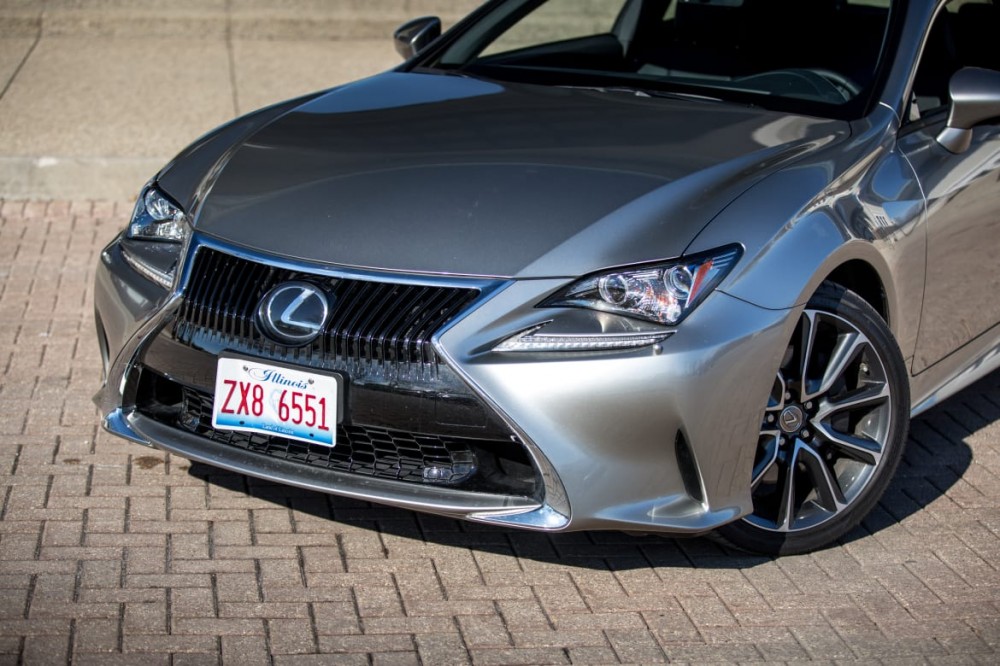
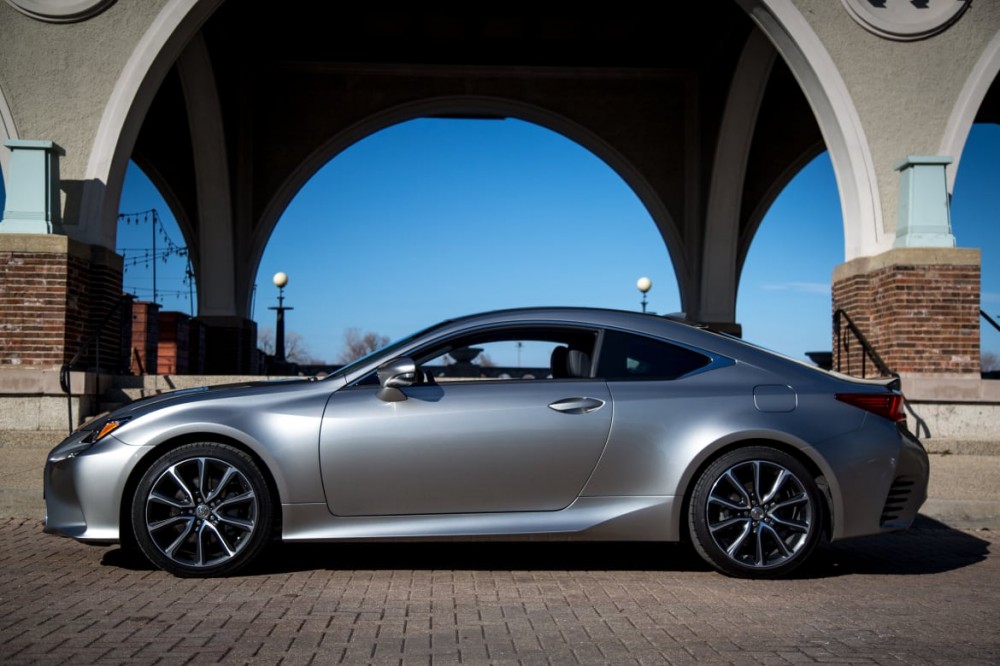
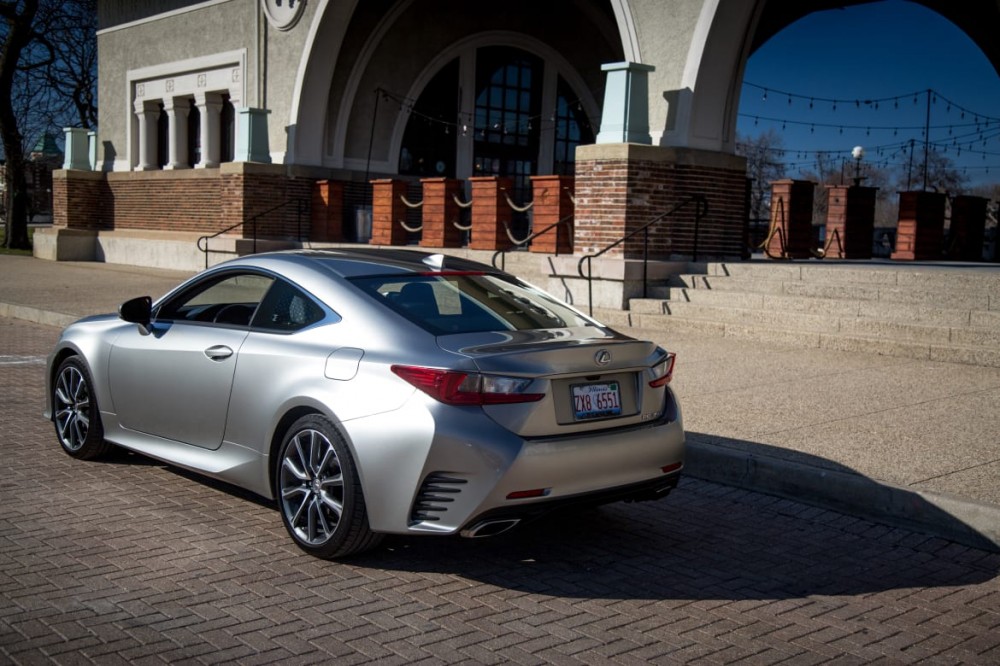
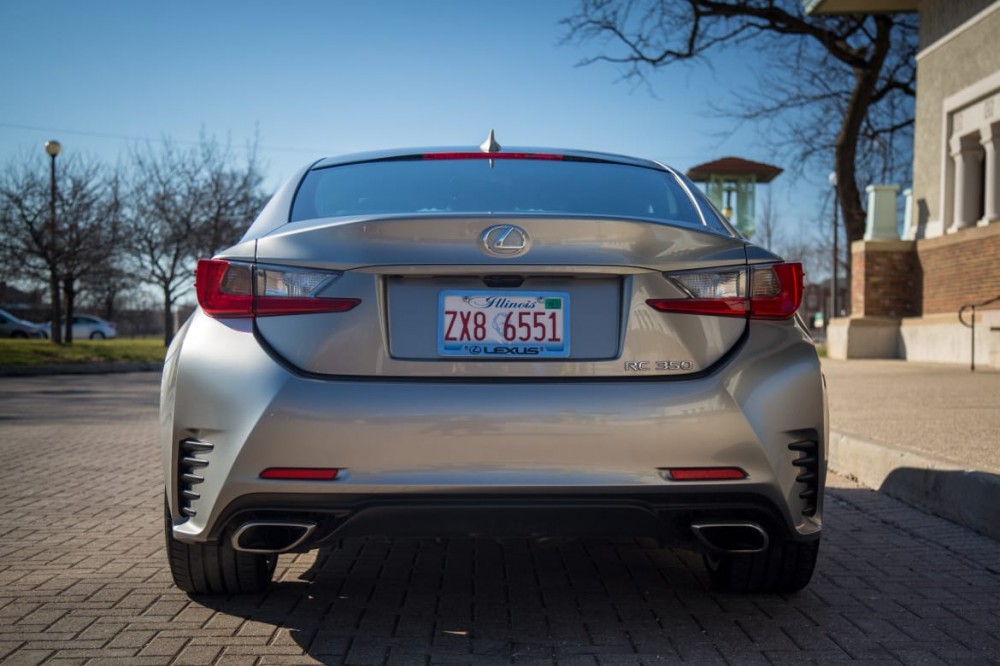
Get the Base Multimedia System
Lexus' Remote Touchpad interface replaces the RC's typical multimedia system dial controller (as well as the mouselike device found on most other Lexus models). Like a laptop mousepad, you swipe with your fingertips to move a cursor on the main multimedia system for audio, navigation and phone control. Most RCs I've tested have this, and it isn't particularly easy to use while driving. It's easy to trigger the touchpad even when you don't want to, and swipes don't always result in the desired cursor movement.
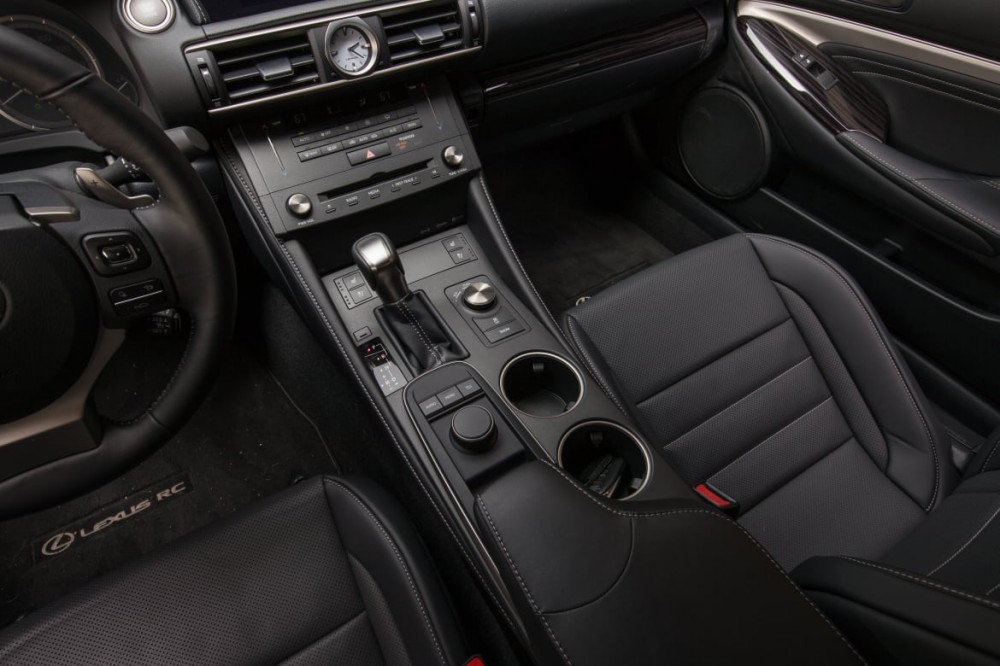
Test cars are usually loaded with options, so I was surprised (more like thrilled) to see the base multimedia system and standard dial controller. You simply rotate it from Radio to Display to Setup, etc., and your selection is just a click away rather than having to drag diagonally or think about where the icon is located using the touchpad system.
If you've ever used a dial controller like BMW's iDrive or Mercedes-Benz's Comand, the RC's base multimedia system will feel familiar to you. Even if you haven't, it's easy to pick up. On the downside, the controller isn't decorated in any unique way — it's still the base system, after all — and the screen isn't as high-resolution or filled with as many smartphone integration features as RCs with navigation.
The RC lacks Apple CarPlay and Android Auto, my preferred phone integration system in new cars, but at least the standard multimedia system has new-for-2017 Scout GPS integration, where you download a navigation app that displays on the RC's main media screen.
The RC isn't very phone-friendly in another regard: My wife and I both have plus-sized iPhones in big cases, and there's no open cubby to hold them. Both were too big to fit in the cupholders. The door pockets are hard to get at while seated, and for a passenger to access the center console is intrusive to the driver. For a nice drive with that special someone, you should either get smaller phones or leave them at home — the phone, not that special someone, though the latter would free up a spot for your phone in the passenger seat…
Don't Get the F Sport Package
OK, maybe it's not as simple as "Don't do this," but the F Sport Package groups a performance-oriented adaptive suspension with sport seats, a more aggressive Sport Plus driving mode and a slick instrument cluster. The F Sport amplifies the RC's driving fun in corners, but I don't think it's as engaging as a BMW 4 Series M Sport, which better balances sport and comfort. The F Sport's ride never feels relaxed, and the car is on edge even though the suspension's firmness is adjustable.
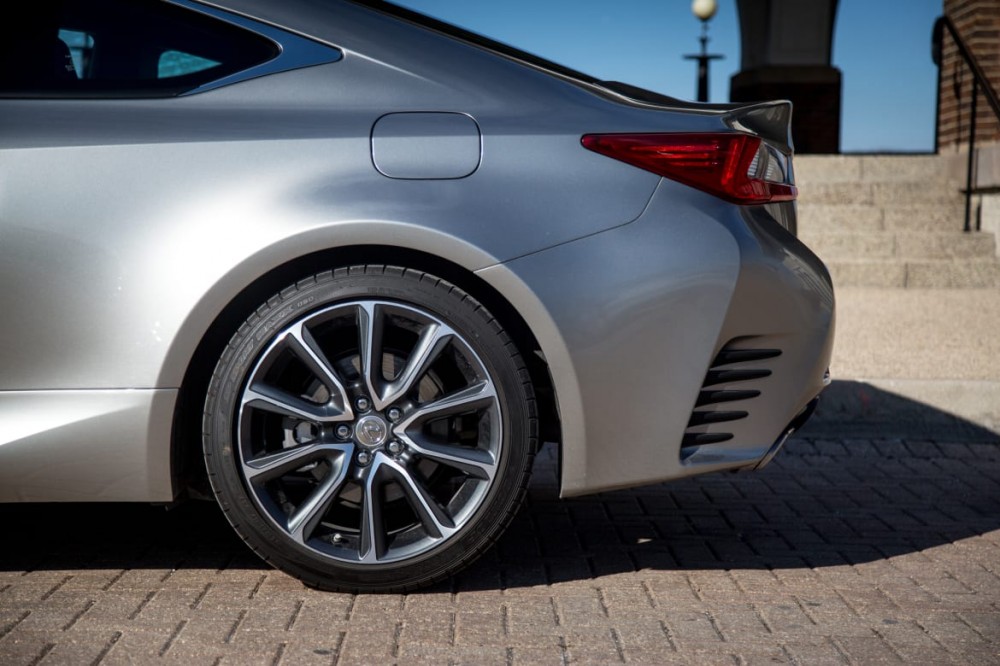
So that leaves us with the base suspension, which is both perfectly livable and tight in a performance way without being overly twitchy or harsh. A non-F Sport is an everyday car that can take a trip into the city without rattling your fillings loose on pothole-ridden streets and still be comfortable for a weekend getaway.
However, while the optional 19-inch wheels with Dunlop SP Sport Maxx summer tires certainly look good on the RC 350, tire noise plagued the interior. There were loud thwacks over bumps even when you couldn't feel them in the seat of your pants.
Acceleration
If you get into the RC 350 thinking it's going to drive as full-throttle as it looks, you'll need to lower your expectations a smidge. The RC 350's 306-horsepower V-6 has a large task pushing the 3,700-pound coupe around, and this non-turbocharged V-6 compares closer to BMW and Audi's turbo four-cylinder cars in performance (and price) than it does to their turbocharged six-cylinder counterparts.
Lexus says the rear-wheel-drive RC 350 can go from zero-to-60 mph in 5.8 seconds, which is a few ticks slower than both the BMW and the Audi. BMW estimates a time of 5.5 seconds for its turbocharged-four-cylinder 430i with an automatic transmission and rear-wheel drive, while an Audi A5 2.0T with an automatic transmission and all-wheel drive is rated to get there in 5.6 seconds. Mercedes-Benz's C300 coupe with rear-wheel drive hits 60 mph in a manufacturer-estimated 5.9 seconds. Compare the RC 350 with its competitors here.
The RC 350's engine makes enjoyable whooshing, rush-of-air sounds, but you never feel a rush of acceleration — partly because the powertrain programming feels economy-minded. There are Eco, Normal and Sport modes, but Normal is more like an Eco mode with slow throttle response and transmission tuning that's quick to upshift and slow to downshift. Slap it into Sport mode, and there's only a small increase in throttle and transmission crispness; the car doesn't transform into a different animal. But I think that's OK for this car; it goes and it stops, and that will be plenty for most.
Where the RC 350 has 306 hp, the RC 200t has 241 hp and the RC 300 has 255 hp. The 200t is rear-drive only and the RC 300 is all-wheel-drive only. The RC 350 offers both, but its AWD comes with a six-speed automatic transmission instead of the eight-speed.
Safety
The RC 350's crashworthiness is top-rated in Insurance Institute for Highway Safety tests. A backup camera is standard. Optional safety features include blind spot monitoring with rear cross-traffic alert and forward collision warning with automatic emergency braking, the latter of which earned the middle rating of advanced in IIHS testing.
In the Market
The standout aspect of the RC 350 is how wild it looks compared with the modest designs of the BMW 4 Series and Audi A5. The RC 350's starting price of $43,985 with destination charge is comparable to the 2018 Audi A5 Coupe 2.0T ($43,775), 2017 Mercedes-Benz C300 coupe ($43,575) and 2018 BMW 430i ($43,395). My conservatively equipped test car, for $48,289, had a Premium Package ($1,240) that added heated and ventilated seats plus blind spot monitoring with rear cross-traffic alert. The car also added adaptive cruise control and forward collision warning with automatic emergency braking for $500 and a moonroof for $1,100, plus a few miscellaneous features.
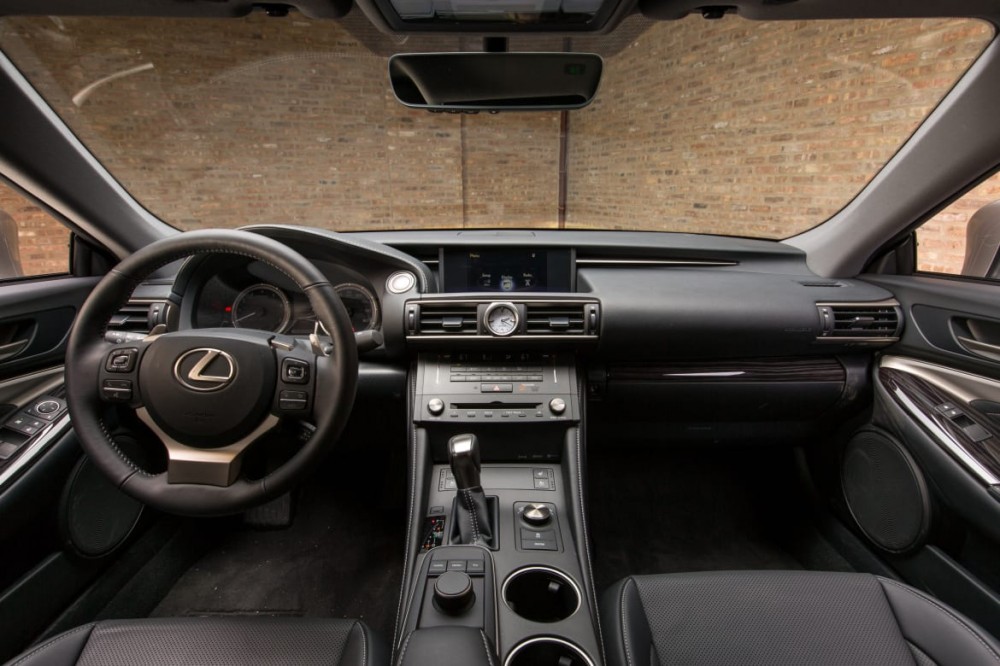
If styling is what floats your boat, the RC 350 is a perfectly competent package — even as a mid-range model, as my test car was. If you want something for curvy backroads or an occasional track day, you'd be barking up the wrong tree with the RC.
As equipped, it isn't the most engaging car to drive. I don't think that's a problem, however, because the RC feels so roomy up front and has good visibility. This RC 350 offers a relaxed, airy experience perfectly suited for leisurely drives down a tree-lined backroad highway.








